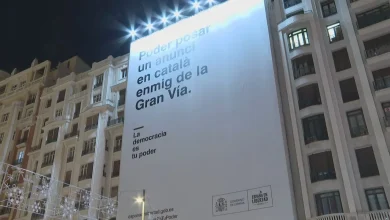The EV charging tax is the coward’s way out for Rachel Reeves

One moral of the Budget is to beware of governments offering you incentives to buy a particular kind of car. On the advice of the then EU Transport Commissioner Lord Kinnock 25 years ago, the Blair government encouraged us all to buy diesel vehicles on the grounds they did more miles to the gallon and were therefore better for the environment. A few years later those who fell for the bait – including me – suddenly found ourselves treated like antisocial thugs, destroying kids’ lungs, and had our cars driven off the road by ULEZ zones.
But at least we got the chance to drive around for a few years before officialdom turned against us. It was only four months ago that Transport Secretary Heidi Alexander announced the re-introduction of grants for buyers of new electric vehicles (EVs), who will receive a bung of £3,750 from the taxpayer. But what she has handed out with one hand, Rachel Reeves has just taken away with the other. From 2028, EVs will be subject to a new charge of 3 pence per mile. Drive 12,000 miles a year and that will be £360, thank you. By the time the vehicle reaches the scrapyard in a decade or so’s time, the government should just about have recouped its grant money.
The per-mile charge on EVs isn’t quite the same as a fuel duty
Just what is the point of this merry-go-round of public money? Why not just keep taxes low and forget the handouts?
According to the Office for Budget Responsibility (OBR), the new tax will reduce the sale of new EVs by 440,000 over the next five years, making it harder for manufacturers to reach the punishing targets laid down by the zero emissions mandate (ZEF). Over time, however, revenue from the per-mile charge is easily going to outstrip the cost of the EV grants. There is only a pot of £650 million available for EV grants. By contrast, the per-mile charge creates a new tax base which will grow year on year. It might be 3 pence per mile now, but as petrol and diesel cars are steadily replaced with EVs (assuming that is what happens) and revenue from fuel duty starts to drain away, that charge will surely be ratcheted up to the point at which it is earning £24 billion or so – what the OBR expects the government to raise from fuel duty in the current year.
But the per-mile charge on EVs isn’t quite the same as a fuel duty. It is more regressive and does not reward motorists for buying smaller vehicles and driving more economically – something which fuel duty does achieve. Drive around in an electric SUV and you will be paying the same as if you were driving an equal number of miles in a smart-car.
That is one reason to think that the per-mile charge is really just a stop-gap, and that a more comprehensive redesign of motoring taxes lies around the corner. The last Labour government tinkered with and then baulked at the idea of road pricing, where we are charged according to how far we drive, on what roads and at what time of day. It would make sense to introduce such a system in order to replace fuel duty, along with the ever-increasing and confusing patchwork of tolls, ULEZ charges and congestion charges with which motorists currently have to contend, with a single road-pricing system which sent you, say, a monthly bill. It could be used to discourage driving in cities where good public transport exists while imposing much lower costs on rural motorists who don’t have much choice.
The trouble is, many motorists don’t like the idea of having their cars tracked around the country either by black box or number plate recognition cameras – even though this is already being done by a multitude of cameras. EVs provided an opportunity to introduce such a system. But so far it seems as if the present government is not brave enough to make a move and has settled on a blunt per-mile charge which will tax frugal motorists in rural areas just as much as those who drive Chelsea tractors.




